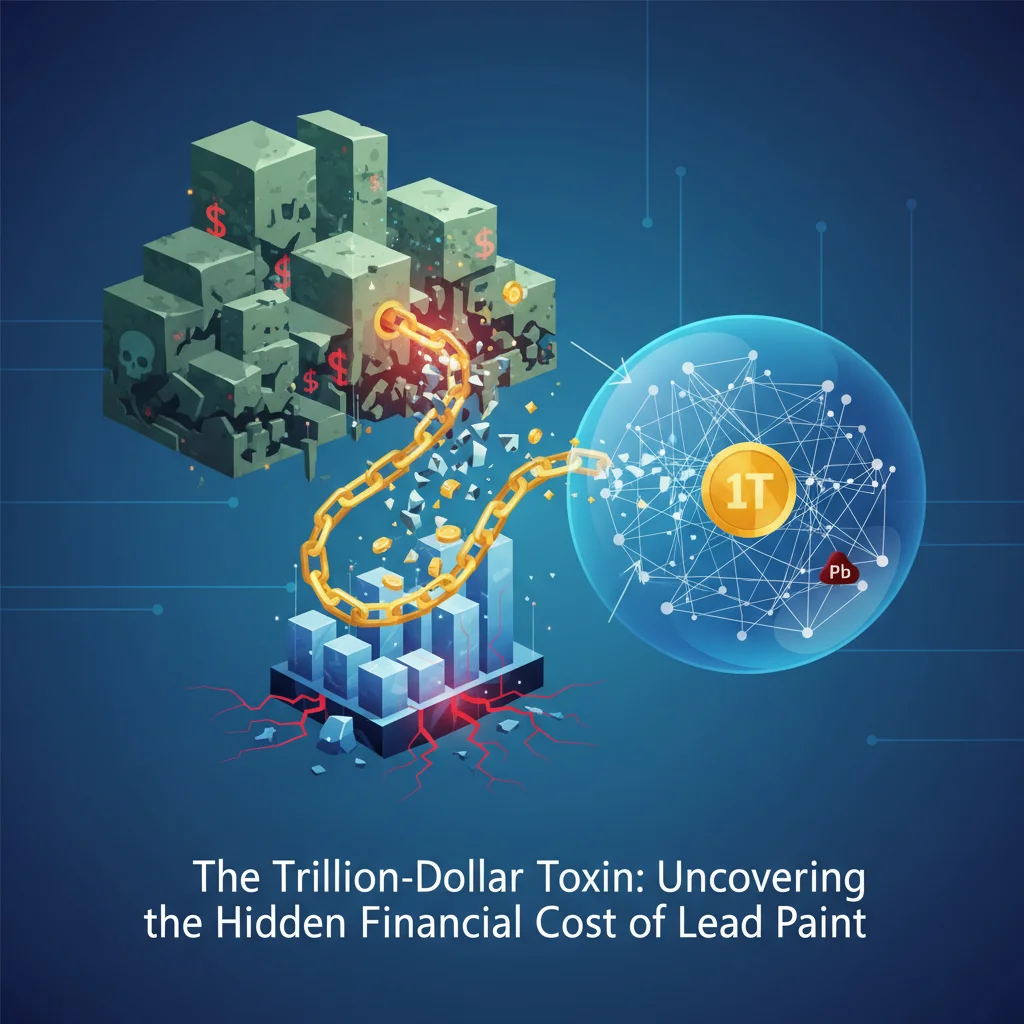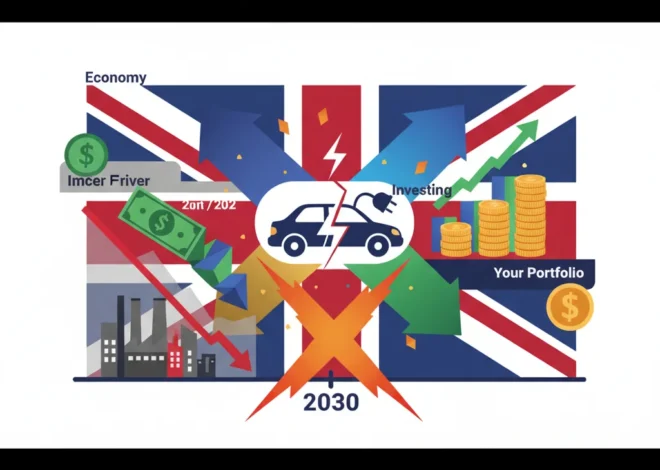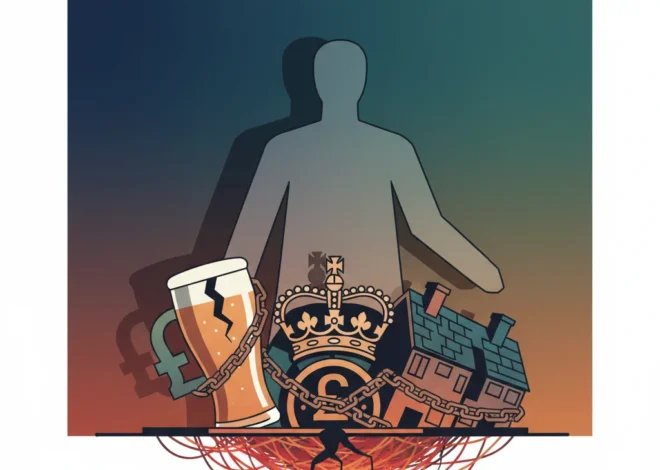
The Trillion-Dollar Toxin: Uncovering the Hidden Financial Cost of Lead Paint
In the world of finance and investing, we are trained to identify risk. We build complex models to forecast market volatility, analyze balance sheets for hidden debt, and scrutinize geopolitical trends. Yet, one of the most significant and costly risks to our economy, public health, and real estate values is often invisible, silent, and hiding in plain sight: lead paint. It’s a toxic legacy painted over decades ago, but its financial consequences are only now bleeding through to the surface.
The story of lead poisoning is often framed as a tragic public health issue, a relic of a bygone industrial era. But to view it solely through that lens is to miss the colossal economic iceberg beneath the surface. This is not just a story of personal tragedy; it’s a narrative of corporate liability, suppressed economic potential, and a multi-trillion-dollar infrastructure challenge that the modern financial world has yet to fully price in.
The Human Cost, The Economic Shadow
The immediate impact of lead is devastatingly personal. As detailed in the Financial Times’ “Toxic Legacy” series, even microscopic amounts of lead dust can cause irreversible neurological damage in children, leading to lower IQs, learning disabilities, and behavioral problems. For families, the emotional toll is immeasurable. But for economists and investors, the quantifiable costs are staggering.
Every year, childhood lead exposure costs the U.S. economy an estimated $862 billion in lost productivity, healthcare expenses, and social services. This isn’t a one-time charge; it’s an annual drag on our economic engine. It’s a workforce that is less productive, a healthcare system burdened with preventable conditions, and a generation of potential that is permanently capped. When we discuss long-term economic strategy, this silent drain on human capital is a variable that is almost always ignored.
A Calculated Legacy: From Premium Product to Pernicious Liability
To understand the financial implications today, we must look back at the business decisions of yesterday. Lead was not added to paint by accident. For decades, companies like Sherwin-Williams and NL Industries (formerly National Lead) marketed lead-based paint as a premium, durable product. The iconic “Dutch Boy” mascot was a symbol of quality, gracing the walls of millions of American homes.
However, the industry was aware of lead’s dangers far earlier than was publicly admitted. As early as the 1920s and 30s, medical evidence pointed to its severe health risks, yet the industry continued its aggressive marketing for another four decades. This historical context is crucial for anyone in finance or investing. It represents a classic case of a corporation prioritizing short-term profits while creating a “long-tail liability”—a risk that materializes many years after the initial action. This is a pattern we’ve seen with asbestos, tobacco, and now, PFAS “forever chemicals.” The stock market may have rewarded these companies for decades, but the ultimate bill is now coming due, not just for the companies, but for society as a whole.
The Labubu Effect: How a Tiny Toy Signals Huge Shifts in Global Investing and the Consumer Economy
To put the scale of this economic burden into perspective, consider the various channels through which lead poisoning extracts its cost from our economy. The table below breaks down these multifaceted impacts.
| Area of Economic Impact | Description of Cost |
|---|---|
| Healthcare Costs | Increased spending on medical treatments, chelation therapy, and management of long-term health issues like kidney disease and hypertension linked to lead exposure. |
| Lost Lifetime Earnings | Reduced cognitive function and lower IQ points directly correlate with lower earning potential over an individual’s lifetime, creating a drag on GDP. |
| Special Education & Social Services | Higher demand for special education programs in schools and increased costs for the criminal justice system, as lead exposure is linked to ADHD and aggression. |
| Real Estate Devaluation | Properties with known lead hazards have lower market values and are more difficult to sell or insure, trapping capital and hindering community development. |
| Remediation & Abatement Costs | The direct cost to safely remove or contain lead paint from an estimated 35 million U.S. homes, a massive infrastructure and public works expense. |
The real question for investors today is: what other “lead paint” situations are we ignoring? What widely used products or chemicals today will generate trillion-dollar liabilities in 2060? This isn’t just about historical justice; it’s about forward-looking risk management. The financial technology and data analysis tools we have today should be deployed to identify these legacy risks. There is a massive opportunity for fintech platforms that can scrape property records, historical building permits, and demographic data to create a “lead liability score” for real estate portfolios. This is where finance can move from being a passive observer of the problem to an active architect of the solution.
The Path Forward: Financing a Lead-Free Future
The scale of the problem is immense, but it is not insurmountable. Eradicating lead from our homes and water systems is, at its core, an infrastructure project—one with one of the highest possible returns on investment. Studies have shown that every dollar spent on lead paint abatement generates between $17 and $221 in societal benefits. In the language of finance, that is an ROI that would make any venture capitalist’s head spin.
So, how do we fund it? The solution will require a sophisticated blend of public and private capital.
- Green and Social Impact Bonds: Municipalities and states can issue bonds specifically targeted at lead abatement projects. These are highly attractive to the growing pool of ESG-focused investors who want their capital to generate both a financial return and a measurable social good.
- Public-Private Partnerships (PPPs): Government agencies can partner with private construction, engineering, and financial firms to execute large-scale remediation programs efficiently. The banking sector can provide the bridge financing and project management expertise.
- Innovative Fintech Solutions: Financial technology can play a role in streamlining the process. Imagine platforms that connect homeowners with certified abatement contractors and provide access to low-cost financing options, all managed through a transparent digital ledger—perhaps even leveraging blockchain for tracking certification and payments to ensure funds are used effectively.
UK's New Tax Gauntlet: Are High-Earning Professionals in the Crosshairs?
An Investor’s Guide to Buried Risk and Opportunity
For finance professionals and business leaders, the toxic legacy of lead offers critical lessons for modern-day trading and investing strategies. The economy of the 21st century will be increasingly defined by how we deal with the liabilities of the 20th.
For Investors:
The takeaway is to look beyond the quarterly earnings report. When evaluating a company, especially in the industrial, chemical, or materials sectors, ask the hard questions. What is their environmental history? Are there potential long-tail liabilities that are not reflected on the balance sheet? A company’s stock market performance today could be built on a foundation of toxic sand that will give way tomorrow. ESG screening is no longer a “nice-to-have”; it’s a fundamental component of risk management.
For Business Leaders:
The lesson is about the true cost of an externality. The lead paint industry socialized its risks while privatizing its profits. Today’s leaders must understand that society—and the markets—will eventually hold them accountable. Proactive environmental stewardship and transparency are not costs; they are investments in long-term viability and brand reputation.
Sequoia's Breaking Point: When Partner Politics Trigger a C-Suite Resignation
Conclusion: From Toxic Liability to Economic Asset
The challenge of lead paint is a stark reminder that some of the biggest threats to our economic well-being are not found in the fluctuations of the stock market, but in the physical world around us. For decades, we have simply painted over this problem, hoping it would stay hidden. But the economic and human costs are now too large to ignore.
Addressing this crisis is not a matter of expense, but of investment. It is a chance to create jobs, improve health outcomes, raise property values, and unleash the cognitive potential of a generation. It requires us to apply the full force of our financial ingenuity—from innovative banking products to sophisticated investment analysis—to solve a problem that has haunted us for a century. By finally confronting this toxic legacy, we can turn a multi-trillion-dollar liability into a powerful engine for a healthier and more prosperous economy.


